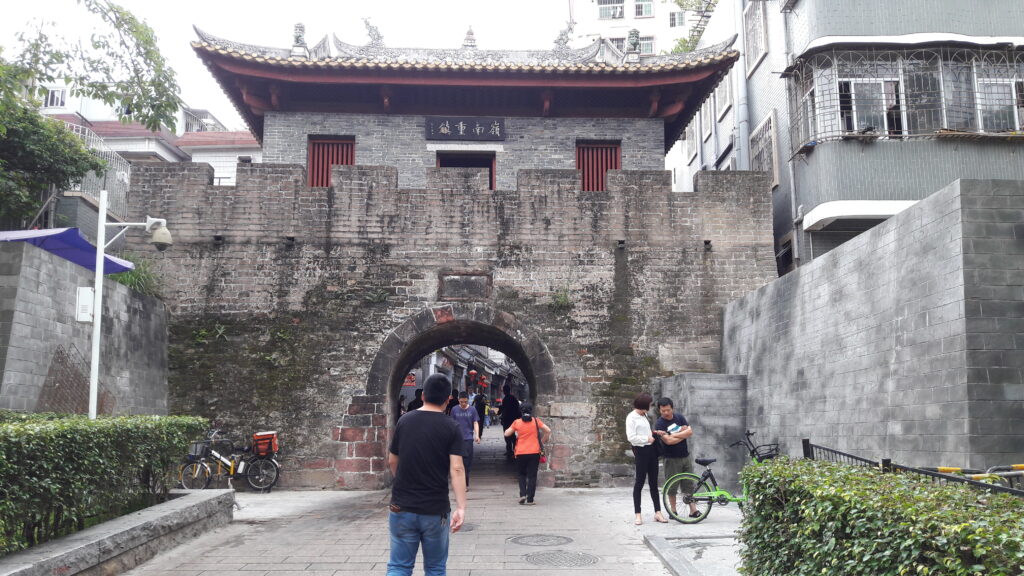Originally posted 23 July 2017
At the end of my time in Shenzhen, I wanted to reflect on the similarities between the city and my usual home of Singapore. There is no doubt that there are many similarities between the cities, and this is not accidental. For example, both are cities that have grown rapidly over a short period of time; both are migrant cities, where most people who live there are born elsewhere; both have experienced large and successful infrastructure development; both exist (or did exist) as relatively isolated, exceptional borderlands; both seem to combine elements of both capitalist and socialist development; both boast large garden or green zones within the city; both are havens for developers and architects seeking to create monumental projects (such as Marina Bay Sands in Singapore and the Vanke Centre in Shenzhen).
Jun Zhang has described how the first model for Shenzhen was its near-neighbour Hong Kong. Hong Kong capitalists and entrepreneurs of course played a significant role in the formation of Shenzhen not only by providing capital. But, especially through task-specific delegations sent to Hong Kong, the island also became an important site of policy learning for the Shenzhen government. By the end of the 1990s, however, it was clear that although Hong Kong’s economic liberalization was to be emulated, its politcal liberalization was perhaps not so desirable. By the first decade of the twenty-first century, then it was Singapore, rather than Hong Kong, that provided an appropriate model for the Chinese Special Economic Zone.
Singapore presented itself as a the most obvious example where economic success could be combined with more authoritarian politics. And, there is no doubt that both the central government and the local government in Shenzhen have attempted to learn and directly emulate the Singapore model. To take one example, my own institution, Nanyang Technological University, has trained hundreds of Chinese Communist Party officials in short-term management and public policy courses. Since 1998, it has offered masters programmes to Chinese government officials, especially mayors, apparently earning NTU the nickname, “overseas cadre school.”
There are many aspects of how this has played out (in urban planning, in politics, in economic policy, etc.) that deserve more attention. As a historian, however, one aspect of the similarity between the two cities intrigues me particularly: that is the mobilization of history and origin stories in the making of Singapore and Shenzhen.
Singapore, as it is often presented, was a mere “Malay fishing village” before Stamford Raffles showed up in 1819 and transformed it into a vibrant imperial entrepot of the British empire. But even into the 1960s, according to many accounts, most of Singapore remained dirty, malaria-ridden, poor, swampy, and backward. It was, according to the dominant narrative, the People’s Action Party government that, after independence, transformed the city into the thriving, rich, global metropolis that it remains today. The government created a modern state and a modern city replete with modern infrastructure, a modern education system, modern legal system, and so on (although for interesting counternarratives see this, for example).
Likewise, Shenzhen’s history is often told as “no history at all.” It too, curiously, supposedly arose from a set of mere “fishing villages” that sat in Bao’an county, adjacent to Hong Kong. It follows that it was the communist government, particularly Deng Xiaoping, who created the Special Economic Zone and hence the city itself from nothing, or almost nothing. Again, it was supposedly the sheer force of political will that shaped the city into a modern, thriving metropolis it is today. As with Singapore, there is a much more complex and nuanced story to be told — although, to my knowledge, very little of it has been documented. The now-Shenzhen area included hundreds of villages, who had a rich history of interaction with Hong Kong. There was a county seat at Nantou that existed since the early Qing. There were dozens of Hakka settlements, some of which still exist.

For both cities, what are the stakes of telling these “rags to riches” stories? For one thing, they place the respective governments at the center of the story. In both cases, these stories seem to attribute much of the credit for success of the cities to the PAP and the Chinese Community Party. Such tales celebrate the power of the state, which is seen to create something out of nothing, almost miraculously, and almost overnight (hence the celebration of “Shenzhen speed”).
But such histories of no-history are also ways of remaking people. The people who did exist in such spaces before are relatively unimportant in such stories. In Singapore, this is tied to ethnicity — it is the “Malays” who are displaced. In both cases, it is “fisherpeople” — a moniker tying them to sea, not land. The place is thereby constructed as tabula rasa (or, like Australia, terra nullius): effectively empty. The cities, and their citizens, are therefore free to be made into something new, free of any existing traditions or customs.
In both cities, this history (or more accurately, a displacement of history) serves distinct political purposes in creating a place and a people that can look only towards the future, that celebrates newness and speed and innovation, and that needs to be “make itself out of nothing,” to be “self-made,” and continue to look to the state as a source of inspiration for direction.